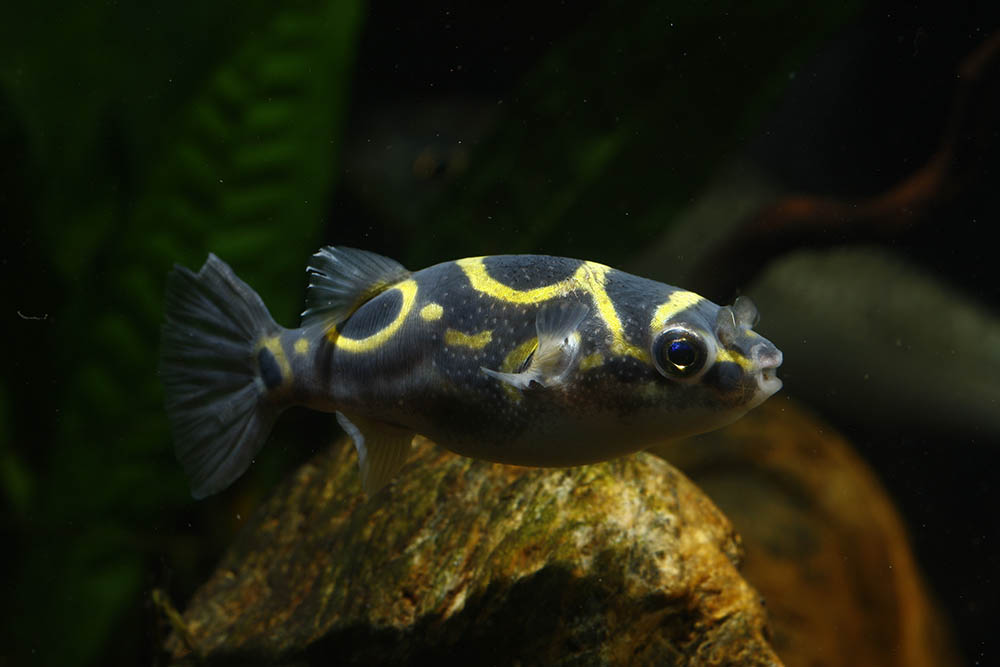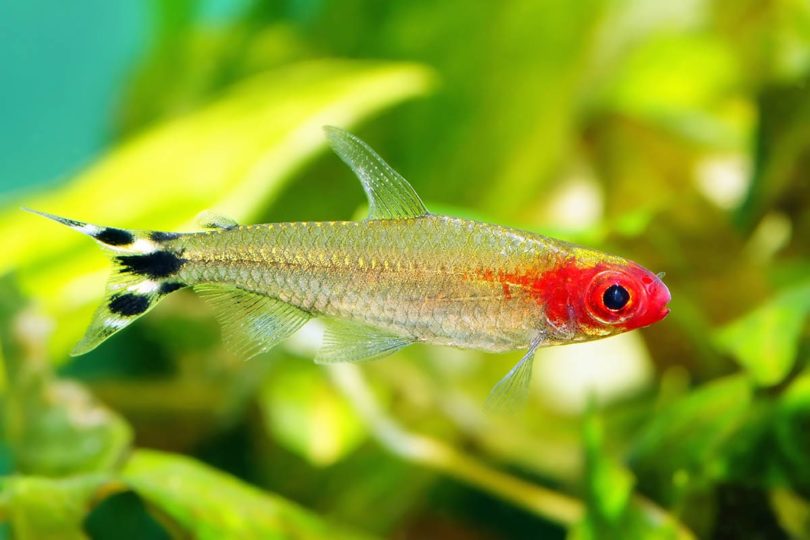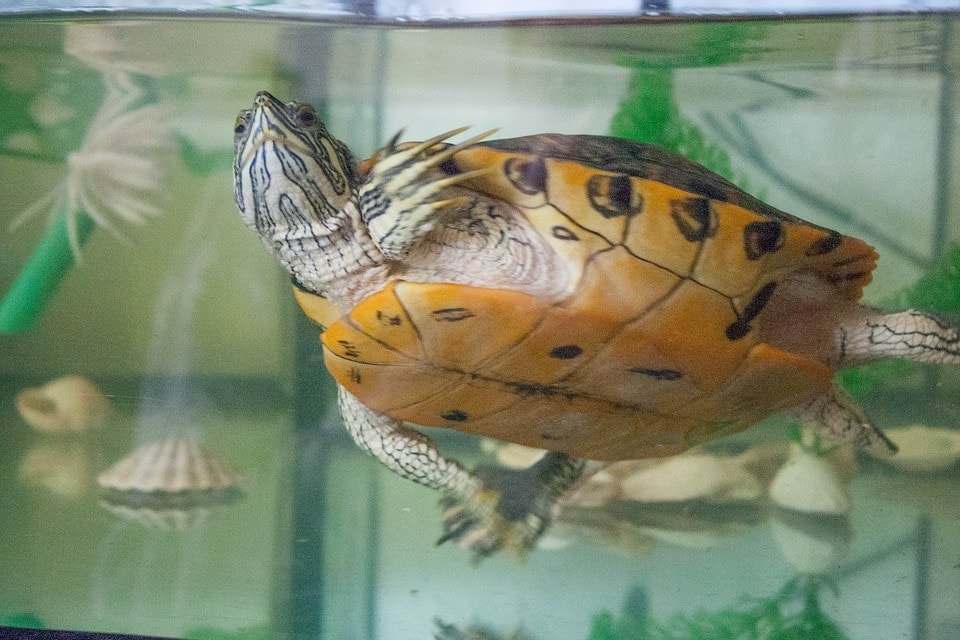Angelfish: Vet-Approved Pictures, Size, Care, Tank Setup & More Info
Updated on
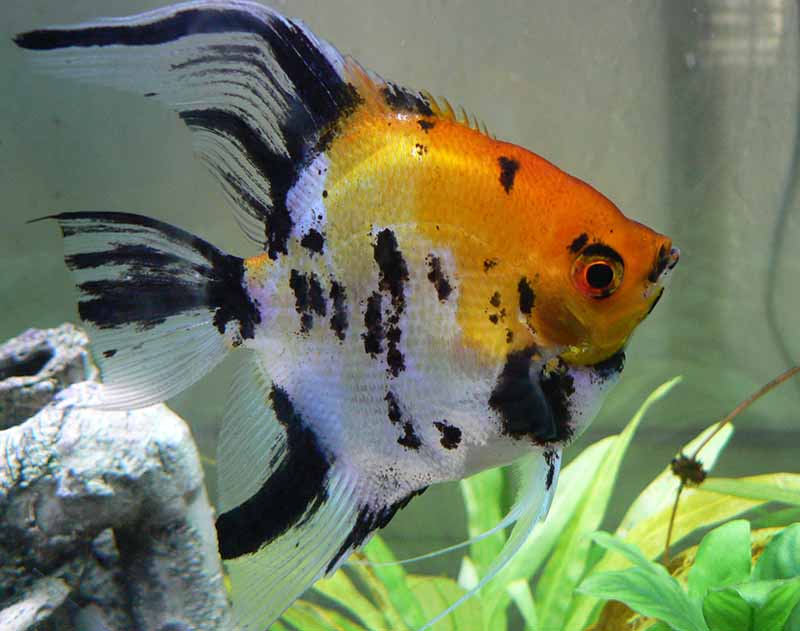
Click to Skip Ahead
The freshwater angelfish (Pterophyllum) is probably one of the most recognizable freshwater aquarium species. It is a popular fish that probably every hobbyist has likely owned at least once. It makes an excellent choice as the star attraction in your tank. It’s relatively easy to care for and gets along with some other readily available fish. So, let’s check out what all goes into taking care of this pet fish!
In this article, we’ll be discussing Pterophyllum, also known as the freshwater angelfish. Marine angelfish of the family Pomacanthidae are not discussed in this article.
Quick Facts About Angelfish
| Species Name: | Pterophyllum scalare, Pterophyllum leopoldi, Pterophyllum altum |
| Family: | Cichlidae |
| Care Level: | Beginner |
| Temperature: | 24 – 30°C (75 – 86 °F) |
| Temperament: | Semi-aggressive, ambush predator |
| Color Form: | Gold, silver, black lace, zebra, chocolate, pearl, marbled |
| Lifespan: | 10–15 years (estimate) |
| Size: | Up to 6 inches |
| Diet: | Carnivorous, prepared or live food |
| Minimum Tank Size: | 30 gallons |
| Tank Setup: | Gravel substrate with large river stones and live plants with vertical structure |
| Compatibility: | Large schooling fish, such as mollies, gouramis, or silver dollars |
Angelfish Overview
Three living species of freshwater angelfish exist, although Pterophyllum scalare (freshwater angelfish) is the one you’ll most likely see. It is a striking fish with a disc-like body shape and elongated fins that give it its distinctive profile. It is generally a peaceful species that will pair monogamously; angelfish only seek a new partner if their current mate passes away. That makes keeping them in pairs ideal.

How Much Do Angelfish Cost?
You’ll find a variety of colors and sizes available, both of which will dictate the price. Most cost under $30, depending on the source. We suggest purchasing fish from sellers who provide some kind of guarantee or warranty. Angelfish are generally hardy species and should acclimate to new surroundings easily, assuming you offer quality conditions.
Typical Behavior & Temperament
Angelfish are usually considered docile, a desirable quality in fish of this size. However, some may become territorial over certain areas within the tank. They’re also ambush predators, and though they appear docile, they can launch surprise ambushes on any other fish they perceive as prey.
Providing plenty of vertical structure with live or artificial plants and cover can curb most aggression issues. Angelfish are relatively docile as juveniles and can be housed together. However, as they mature and pair off, they tend to become more aggressive towards their conspecifics. Males are generally more aggressive. In a pet store, the most injured and best looking individuals are often males, as the most dominant, best-looking males often establish dominance over the weaker, more injured-looking males at a relatively young age.

Appearance & Varieties
The varieties of angelfish typically involve color, particularly in human-bred fish. Wild specimens are usually vertically striped, which provides camouflage among the plants. Other species in this genus have similar coloration patterns with varying numbers of stripes. The most common variety in pet stores is the silver variation, which closely resembles the wild form.
Of course, you’ll also find varieties that don’t exist in nature, such as albino, pearl, sunset blushing, and pearl. We suggest buying fish from a reputable seller. Unfortunately, inbreeding is a problem with this popular tropical fish.
How to Take Care of Angelfish
Angelfish are relatively easy to take care of, given the proper conditions. It lives in the tropical rivers of South America. Therefore, replicating these conditions will help provide your fish with a good quality of life. They are long-lived for aquarium species. Let’s begin with your setup and what angelfish needs to thrive.
Habitat, Tank Conditions & Setup
The angelfish makes an excellent choice for enthusiasts new to the hobby. It’s not as delicate as many species. Your challenge is providing the optimal environment that minimizes stress and conflict. These freshwater members of the Cichlidae family are native to South America. Therefore, a tropical aquarium setup is in order to provide these conditions.
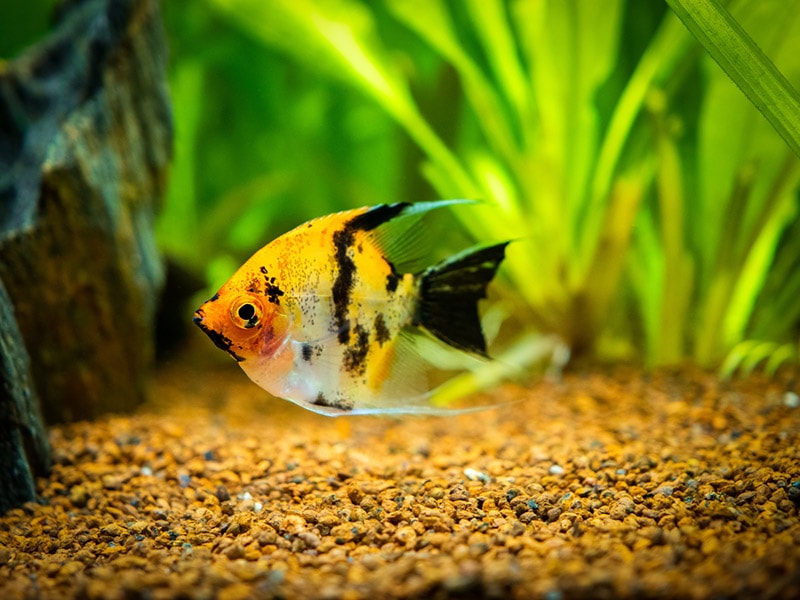
Aquarium Size
You can get away with keeping young Angelfish in a relatively small tank. However, we recommend at least a 30-gallon aquarium to accommodate its large adult size. These fish will use the bottom and middle layers of the tank. Stratification in these places can provide interest and cover. They prefer taller vertical spaces because of their body form. You can consider a vertical tank instead of the standard regular ones.
Water Conditions
The ideal water temperature is on the higher end of the scale for aquarium fish. Keep this range in mind when selecting tank mates. The optimal pH is between 5.5 – 7.8, with a wide water softness preference, ranging anywhere from 1 – 15 dH; however, consistency with pH and dH is key to their health. The waters in which they swim are generally clear. You can ensure similar conditions with a power filter that will also provide well-oxygenated water with surface agitation.
Good water quality is vital for angelfish. We recommend weekly partial water changes. You should also test your tank water frequently, especially if you have live plants. Be sure to remove any dead ones promptly to avoid fouling the aquarium.

Tank Setup
Angelfish don’t mind a densely planted tank. You can use a combination of live and artificial plants, opting for taller ones to provide camouflage. Large stones and driftwood will replicate their river habitat in the wild. However, keep the available space on the front burner to avoid overcrowding your tank and provoking aggression.
You will need a heater to maintain the tropical conditions in your aquarium. A hood with a UV light will ensure adequate exposure for this diurnal species. You should also avoid placing your tank in direct sunlight, which can spur algae growth.
Are Angelfish Good Tank Mates?
Like many species, angelfish will eat any small fish, even tank mates like zebra danios and neon tetras. After all, it is a carnivore. The fact remains that the big fish go after the smaller ones. However, its large fins make it a relatively slow-moving fish. Therefore, by nature, angelfish are ambush predators. They hide until a fish wanders too close to them and then launch with a burst of speed to catch them.
The angelfish does best with other large, peaceful varieties, like discus and gouramis. Make sure to provide plenty of cover so that everyone can stake out their favorite spots.

What to Feed Your Angelfish
The angelfish isn’t a picky eater, which is another point in its favor. It’ll take commercial food in just about any form, from flakes to pellets. It also enjoys live and freeze-dried food, like shrimp and bloodworms.
Keeping Your Angelfish Healthy
Stable, clean conditions are imperative for keeping angelfish healthy. Their river habitat ensures fresh flowing water that you can replicate with an optimal filter setup for the size of your aquarium. A nutritious diet is also critical. We suggest making checking your fish a daily habit. Signs of an illness include loss of appetite, lethargy, and color loss.

Breeding
Breeding angelfish in captivity is comparably easy. Of course, it begins with optimal water conditions. Unfortunately, this species is hard to sex. You may only find unsexed specimens available when you buy them. Luckily, these fish will make it easy for you, particularly if you begin with a small group. They mate for life and will pair off naturally. You can also purchase a mated pair.
You can up the temperature and lower the pH further up and down their ranges to encourage spawning. Like other cichlids, angelfish care for their eggs and young and are particularly aggressive when they’re spawning.
Conclusion
The beauty of the angelfish is its biggest attraction. Its slow movement through the water adds to its elegance. Fortunately, this species is pretty hardy and not picky. It’s essential to provide a vertical structure that would replicate its habitat in the wild by providing camouflage. It’ll also be important to keep aggression under control to ensure a peaceful aquatic community. That’s the name of the game with keeping angelfish.
Featured Image Credit: J E Hollingsworth, Shutterstock





